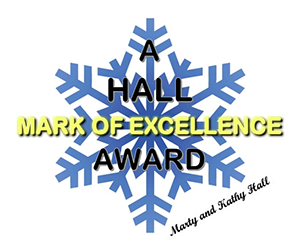 This coverage is made possible through the generous support of Marty and Kathy Hall and A Hall Mark of Excellence Award. To learn more about A Hall Mark of Excellence Award, or to learn how you can support FasterSkier’s coverage, please contact info@fasterskier.com.
This coverage is made possible through the generous support of Marty and Kathy Hall and A Hall Mark of Excellence Award. To learn more about A Hall Mark of Excellence Award, or to learn how you can support FasterSkier’s coverage, please contact info@fasterskier.com.
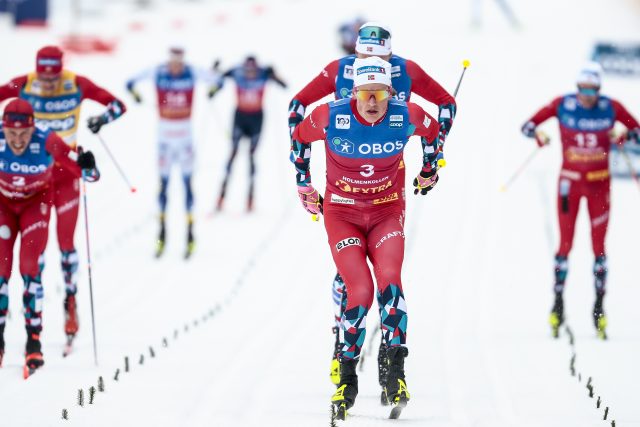
Years ago—when Johannes Hoesflot Klaebo (NOR) was still just a world Cup newbie—fans watched him trip over a klister-fed snow-snake on a Holmenkollen downhill, and go flipping ass over tea kettle. It’s the very last time most of us remember seeing him fall in a race. Since that day, he has been nearly infallible: winning World Cup Sprints at will, cherry-picking distance wins when courses and conditions suit him, collecting multiple medals at World Championships and Olympic Games, battling Russian superstars and winning a 50 k World Championship race (only to be stripped of the victory when a FIS jury decided he impeded Alexander Bolshunov), missing whole portions of seasons due to injury or illness, occasionally dominating the Tour de Ski, giving friendly and considerate interviews to reporters and the media, waiting through to the very end of a seemingly endless line of autograph seekers at the recent World Cup venue in Minneapolis, and winning more than half of the World Cup events he enters. Still, lots of ski-fans don’t like him (Russian ski-fans seem to openly despise him). Is the too-neatly coiffed hair? The casual ease with which he often dominates? The coy confidence in his post-race grin? The sprinter’s tactics he often employs? The equipment advantages he seems to enjoy? The resentment that his consistent success may inspire is kind of understandable . . . but any true ski fan should tip their hat to anyone who races with such skill and grace.
Klaebo’s dominance—and ease, and confidence, and post-race grin—were on prominent display on Norwegian skiing’s biggest stage: the Holmenkollen 50 k Classic Mass Start. With Norwegian royalty in attendance—and in front of an estimated 100,000 cheering Norwegian fans—Klaebo sprinted to victory down the finishing straightaway ahead of teammates Martin Loestroem Nyenget, Paal Golberg, Harald Oestberg Amundsen, and Didrik Toenseth. Jens Burman (SWE) and Federico Pellegrino (ITA) broke up the Norwegian sweep in sixth and seventh, respectively . . . but the show on the big stage was definitely a Norwegian one.
Canadian Antoine Cyr spent the entire day in the lead group, only being gapped in the final kilometers to finish a laudable 20th. His Canadian teammate, Sam Hendry, would finish 33rd.
ADVERTISEMENT
Americans enjoyed good finishes as well, especially considering the many extra Norwegian entrants (12, in all) who tend to crowd into the top places of any Norwegian-hosted World Cup distance race. Within that talent-laden field, Scott Patterson skied strongly to 25th and Gus Schumacher to 28th. Other American finishers included Zanden McMullen 45th, Michael Earnhart 50th, Peter Wolter 55th.
“Holmenkollen is always one of my favorites on the World Cup,” said Patterson. “It’s the only time outside of world championships and Olympics that we get to race 50k. Going into a race over twice as long as anything else the season brings a different vibe. There’s more time to chill, build small packs, and move forward with second or even third winds. This year had all those features for me with strong feelings early and late but some weak points in the middle.”
The history and tradition surrounding Holmenkollen is a story of its own, but the subtext of today’s race involved the scrutiny and intensity of the season-long race for the Overall Crystal Globe. Having won the points-rich Tour de Ski earlier in the season (when Klaebo was sidelined due to illness), Amundsen wears the yellow leaders bib. He entered the day buoyed by a lead of 236 points over Klaebo. With 500 points remaining available to anyone who can win-out at the end of the season (190 points available to the winner at Holmenkollen), Klaebo still has a chance to catch Amundsen. But Amundsen is unlikely to just disappear from the results sheet. Those circumstances set the stage for a critical race at Holmenkollen. Both men needed to do well, both men needed to not do poorly. Skiing across the finish line shoulder to shoulder would probably satisfy them both (compared to the disasters that might otherwise occur in a race of such distance and difficulty). How ironic it is that the goal of the day should be a 50 kilometer tie? Neither skier could afford to lose any ground, so they’d suffer through 2+ hours of grueling, hill-climbing, Classic-klister skiing in order to maintain the status quo. Either man had to know that there was little to gain, and many many kilometers of stressful, fast-paced racing across which to not gain it. World cup ski racing is cruel like that . . .
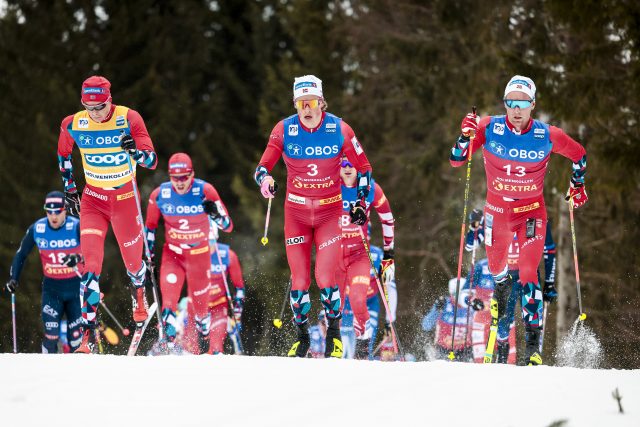
Holmenkollen 50 k
The high hills above Oslo are home to Holmenkollen, Norway’s most famous Nordic ski complex. In the shadow of the facility’s towering ski jump, the trails of the Holmenkollen are laid out, six laps of 8.3 kilometers each, winding twice each lap through the packed stadium. Overcast skies and temperatures just below freezing greeted ski techs on race morning. The day would be ideal klister conditions; very fair racing was anticipated. Norwegian skiers have won 17 of the last 18 World Cup Classic distance races, and 12 Norwegians were included in the 57-man Holmenkollen field. Last year, Norwegians claimed the top ten finishing positions. Hometown fans were understandably confident.
Amundsen (wearing the yellow bib of World Cup Overall Leader) and Klaebo lined up next to each other on the front row. The pace was measured and steady from the beginning, with the field remaining together through the first laps. Intermediate sprints were included each lap, with World Cup points awarded to the first ten crossing the line. Perhaps sensing the need to prevent Klaebo amassing bonus points, Amundsen sprinted forward to contest the first sprint. Klaebo held him off at the line with a masterful throw of the boot, and the field began quickly to settle back in to its early pace. That would be the pattern for much of the day as Klaebo would win five of the six bonus points sprints—typically just ahead of Amundsen. With them finishing 1-2 in nearly every sprint, Klaebo managed to pick up only a handful of points.
Though certainly fast, the ongoing pace of the men’s field seemed civil and organized compared to the from-the-gun slugfest that epitomized yesterday’s women’s Holmenkollen race. It wasn’t until 5.9 k that Iivo Niskanen (FIN) and Andrew Musgrave moved to the front, but the field stayed together and controlled through the first lap.
Nyenget surged to the front forty minutes into the race just before the end of the second lap. His tempo seemed to imply the effort was serious, and Klaebo accelerated to mark the move at 16.6 kilometers. After passing through the stadium, a lead group of Nyenget, Klaebo, Niskanen, and Amundsen formed briefly. The contenders were definitely marking one another, and began to gap the field after the third bonus points sprint. The mini-break attracted the attention of Golberg and Friedrich Moch (GER), who moved themselves to within range of the leaders.
The leaders also began engaging the strategy of double poling outside the set tracks, implying that their klister may have been icing up slightly. Each skier had the option of changing skis once on the day, and commentators began speculating that those changes could come sooner rather than later. Niskanen led the field through the end of lap 3, where all the primary contenders elected to switch skis. Among skiers in the lead group, only Lauri Lepisto (FIN) skied through without exchanging skis, rendering him the leader of the Holmenkollen, albeit briefly. The field soon came back together, and a group of twenty contenders (nine of whom were Norwegian) raced on with 25 kilometers still to go.
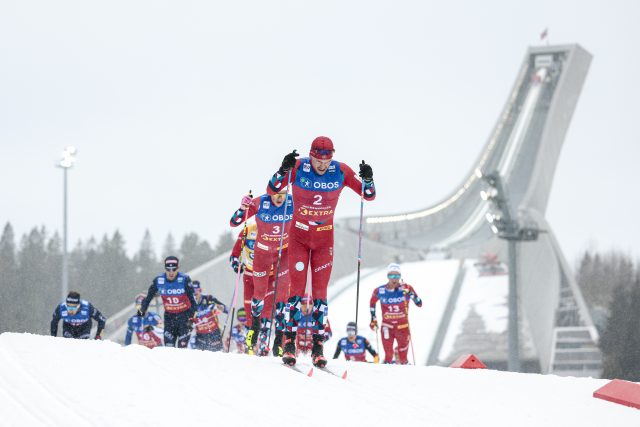
Klaebo stayed ahead of Amundsen in each of the six bonus sprints (winning the first five, outright, only surrendering the final sprint to a surge from Jens Burman of Sweden). Following the final sprint, the lead group was reduced to ten: Niskanen, Klaebo, Amundsen, Golberg, Burman, Pellegrino, Poromaa, Scheley, Toenseth, and Nyenget). Klaebo led the group through the stadium with 3.5 kilometers remaining, displaying the tactics that have brought him so many wins. Klaebo entered the final straightaway in the lead—a position that offered very little chance for anyone to best him. Predictably, he held off his rivals to the line, finishing comfortably ahead of Nynget, Golberg, and Amundsen.
“Finally I won a 50 k!” Klaebo said in post-race interviews, “which is something I’ve been waiting for for a bit.”
With two sprints and two distance races remaining in the World Cup season, Klaebo will have chances to eat further into Amundsen’s lead. Likewise, Amundsen will have chances to defend that lead, a defense of which he appears entirely capable.
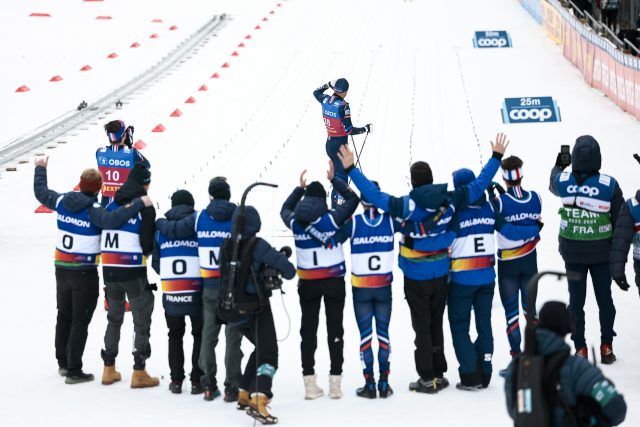
After a long and storied World Cup career, Maurice Magnificat (FRA) paused to salute the crowd just before the finish line, then stepped across into retirement. It was an emotional moment that the crowd stayed around to see, cheering loudly as Magnificat skied into the arms of teammates clad in special bibs spelling out “Merci Momo.”
Holmenkollen 50 k Classic Mass Start RESULTS
ADVERTISEMENT
John Teaford
John Teaford—the Managing Editor of FasterSkier — has been the coach of Olympians, World Champions, and World Record Holders in six sports: Nordic skiing, speedskating, road cycling, track cycling, mountain biking, triathlon. In his long career as a writer/filmmaker, he spent many seasons as Director of Warren Miller’s annual feature film, and Producer of adventure documentary films for Discovery, ESPN, Disney, National Geographic, and NBC Sports.



